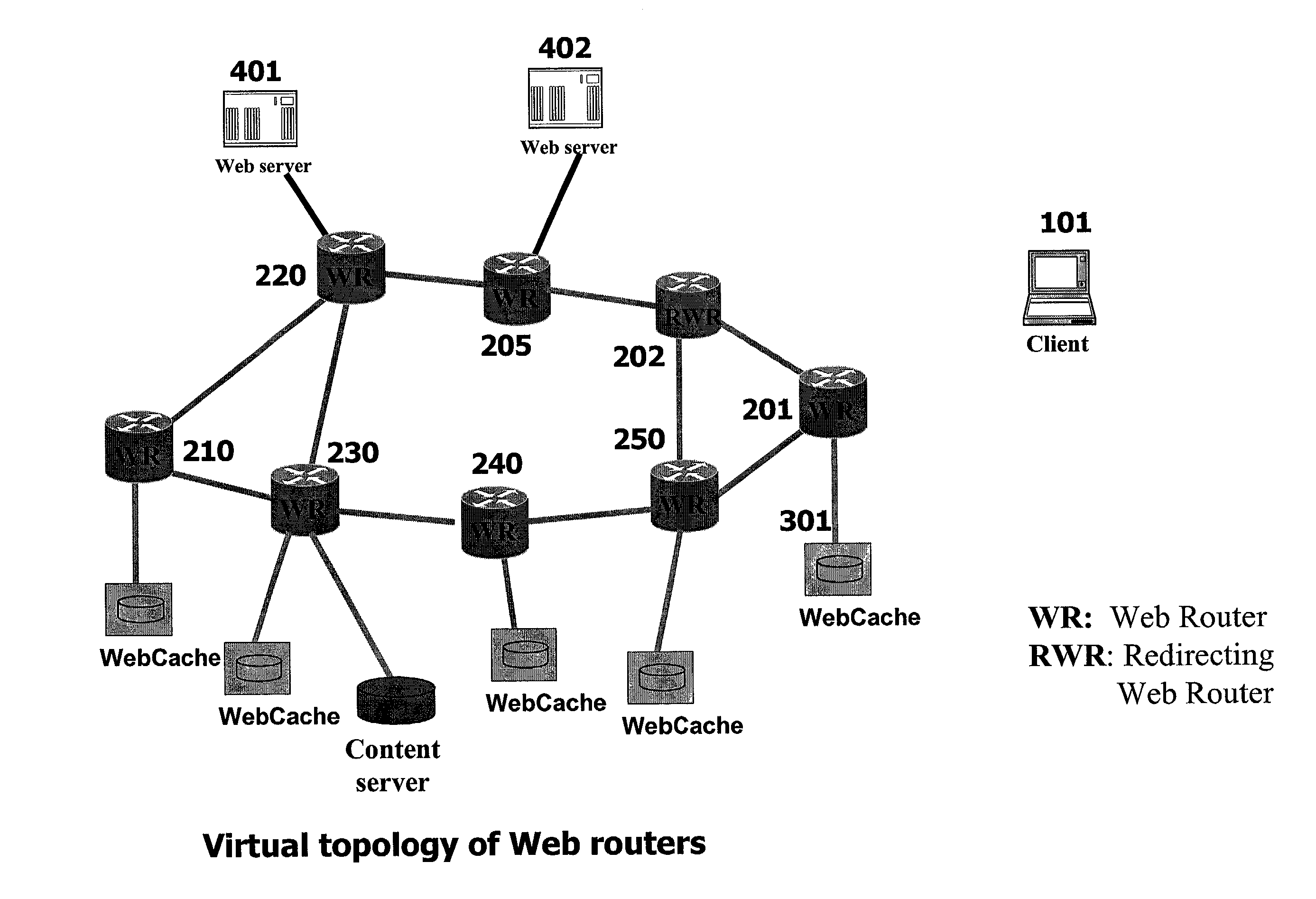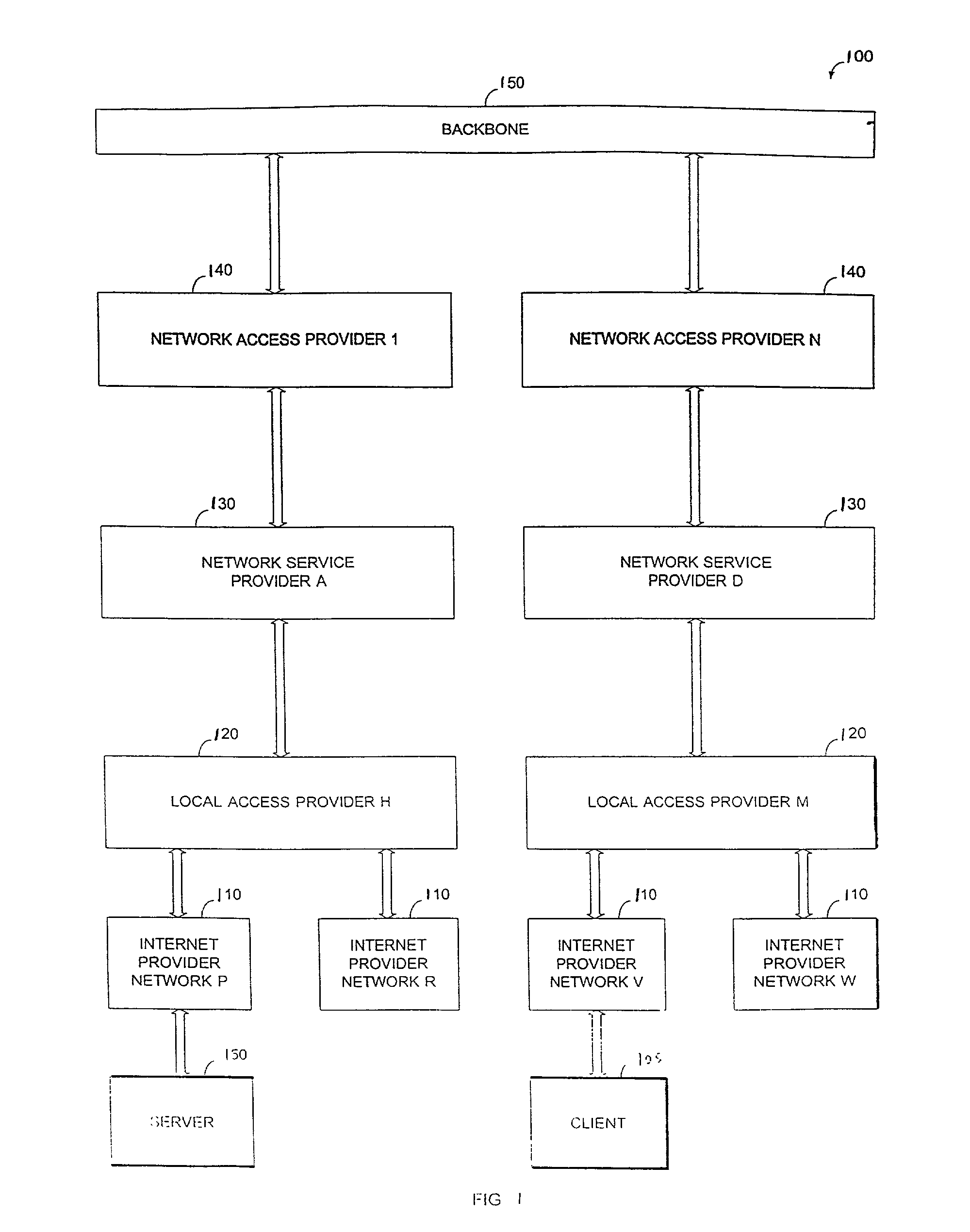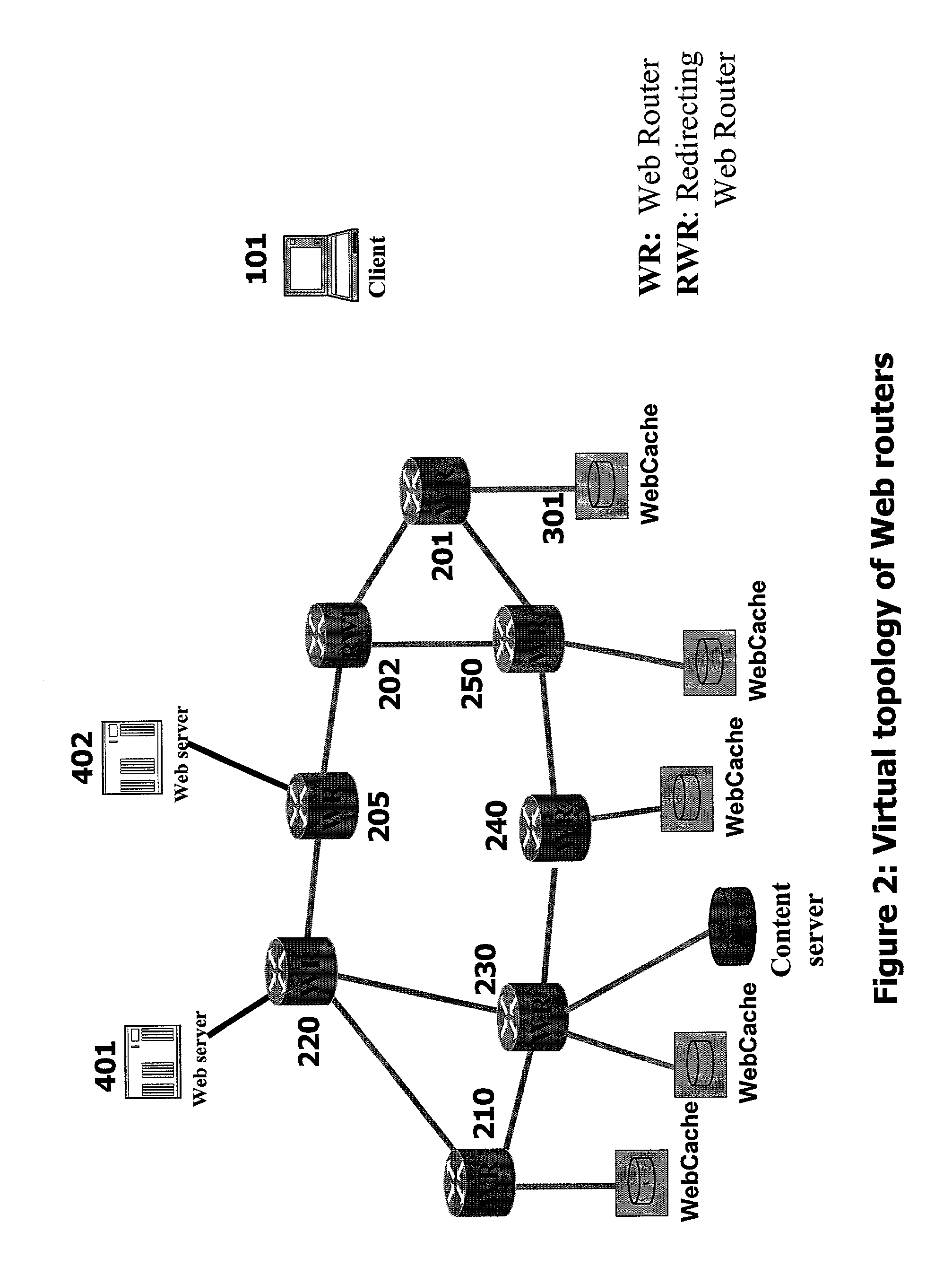System and method for discovering information objects and information object repositories in computer networks
a technology of information object and repositories, applied in the field of system and method for the discovery of information objects and servers, can solve the problems of long access and delivery latencies, people's difficulty in finding specific information objects they need, and the overflow of storage of information objects
- Summary
- Abstract
- Description
- Claims
- Application Information
AI Technical Summary
Benefits of technology
Problems solved by technology
Method used
Image
Examples
Embodiment Construction
[0055]A scheme for enabling the discovery of the caches and servers storing information objects distributed over computer networks, which can be implemented in hardware and / or software, is disclosed herein. More particularly, a method and system for the discovery of information objects and servers storing information objects distributed over computer networks will now be described. In the following description, numerous specific details are set forth in order to provide a thorough understanding of the present invention. However, it will be evident to those of ordinary skill in the art that some of these specific details need not be used to practice the present invention and / or that equivalents thereof may be used. In other cases, well-known structures and components have not been shown in detail to avoid unnecessarily obscuring the present invention. Thus, although discussed with reference to certain illustrated embodiments, upon review of this specification, those of ordinary skill...
PUM
 Login to View More
Login to View More Abstract
Description
Claims
Application Information
 Login to View More
Login to View More - R&D
- Intellectual Property
- Life Sciences
- Materials
- Tech Scout
- Unparalleled Data Quality
- Higher Quality Content
- 60% Fewer Hallucinations
Browse by: Latest US Patents, China's latest patents, Technical Efficacy Thesaurus, Application Domain, Technology Topic, Popular Technical Reports.
© 2025 PatSnap. All rights reserved.Legal|Privacy policy|Modern Slavery Act Transparency Statement|Sitemap|About US| Contact US: help@patsnap.com



